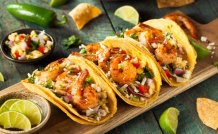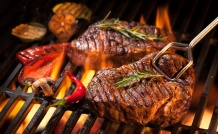Online Class: Spanish Cooking 101

no certificate
with CEU Certificate*
-
12Lessons
-
6Exams &
Assignments -
1,363Students
have taken this course -
3Hours
average time -
0.3CEUs
Course Description
Spanish cookery reflects the Spanish lifestyle; laid back, relaxed cooking that uses fresh beautiful ingredients that are available seasonally and prepared by cooks that are intuitive and resourceful.
This course comprises 12 lessons that take you through the wide spectrum of Spanish cuisine, sampling the delights of the Mediterranean and bringing some of the Spanish atmosphere to your dinner table. Perfect for the amateur or the experienced cook, each lesson takes you through a number of recipes step by step with pictures of each stage.
The course begins with a brief introduction to the history and geography of Spanish cuisine and finishes with a lesson in how to recognize the wines of the country and match them with meal types. In between, there is a little of everything, from vegetarian dishes and salads to steaks and seafood...
If you have ever enjoyed tapas or whipped up an omelet for lunch then you will have some idea of how versatile and delicious Spanish style food can be, if not, then you have lots of fun recipes to try! No prior knowledge is assumed, if you can chop up a few vegetables then you have the know-how you need to get started and enjoy an adventure into all things Spanish and delicious. The key to success in this course is throwing yourself into the cooking process and really letting yourself get creative with the recipes. The pride you will feel when you serve up these dishes will make the whole process of preparing and cooking them so worthwhile that they will become firm favorites for family dinners or serving to guests.
Course Motivation
The Spanish are passionate about their food!
Divided by mountains that once made travel difficult, each region has developed its own culinary traditions using what can be grown and produced locally. Throughout Spain, we see the legacies left by invading countries, and culinary discoveries made by Spanish explorers throughout history.
Many people think of olive oil and good wine as being quintessentially Spanish, but these were originally brought to Spain by an invading Roman army in 218 BC.
Mediterranean influences are apparent in the use of olive oil and garlic, and the ever-present bread basket on the table. This explains why Spanish food has long been considered a healthy option, in spite of the fact that Spanish food tends to be served in large portions, and that Spanish people have such a love for their food and wine. It is widely known now that the Mediterranean diet is healthy because the main source of oil is olives, which is mono-unsaturated, and therefore does not raise cholesterol in the way other fats do. Also, the large proportion of fish consumed ensures that high levels of omega-3 oils are present in the diet, and this is believed to ward off heart disease. Red meat, with its "bad" fats, is consumed in modest amounts, and the ready availability of delicious fresh fruit, straight from the tree, and vegetables, straight from the ground, makes having a healthy diet effortless and enjoyable.
Another invasion by the Moors in 711 AD introduced Spain to many new flavors in the form of spices, such as cumin and saffron, and many new exotic fruits and vegetables, which gradually became naturalized.
And, of course, the 15th century discovery of the New World completely revolutionized the cuisine of Spain, as it did for many other countries, when explorers brought back strange new foods, like potatoes, tomatoes, avocados, peppers, and the makings of today's popular chocolate -- cacao.
Traveling around Spain, it becomes clear that regionally, cuisine differs a lot; but there are elements that re-appear often. Being surrounded on three sides by water, of course, seafood plays a major role in Spanish cuisine. Octopus, sardines, fish, crab, and squid are all common sights in a Spanish marketplace.
Move further inland, and every local marketplace will have a different variety of chorion (chorizo), a spicy sausage made from pork and paprika. Traditionally, every family would make their own chorion and hang it up to use over the winter months, demonstrating again the very Spanish trait of producing as much of your own foods as possible, and the inventiveness that saw the creation of foods like chorion to ensure year-round availability of sufficient food. Most of today's well known Spanish meals have developed and evolved over time. For example, seafood paella, which is one of the best-known and most-loved of all Spanish dishes, originated from the Spanish peasants using whatever ingredients they had to hand, such as rice, snails, and vegetables to make a satisfying dish. Now paella contains all sorts of seafood and is no longer just a peasant dish, and is just as popular as ever. Other "one pot" dishes, such as meat stews and casseroles, are also popular. The long, slow-cooking methods for these dishes somehow reflect the Spanish way of life -- slow and easy going.
Worldwide, Spain is a top producer of nuts -- and walnuts, hazelnuts, and almonds are a common ingredient in Spanish cuisine. At Christmas, turron, a nougat-type candy made from almonds is very popular.
Dairy products are abundant, so cheese made from cows', sheep's, and goats' milk is a big part of the national culinary tradition, used in tapas, as part of a main meal, or as dessert.
Eggs are another very widely used food, eaten daily in one form or another.
Of course, as in most hot, fertile countries, fruit and vegetables are a national favorite, served sautéed, in salads, or straight from the fruit bowl. Very often, these are home grown, and traditionally Spanish cooks will adapt recipes to use whatever they have grown themselves, so the same dish may vary according to what the vegetable garden has to offer.
Beans and chickpeas are a national staple food and common to all regions.
The climate of Spain lends itself to several small meals per day, rather than the three main meals favored in cooler countries. This, again, reflects the Mediterranean way of life. Breakfast tends to be a simple affair, with sweet pastry, like churros, and milky coffee, or hot chocolate for the children. But this is only to provide energy until around noon, when tradition demands that it is time for tapas (small dishes). This is the time when friends gather to share drinks, and tapas. Much more of a social event, than a simple stopgap snack to tide you over until the afternoon lunch, it involves a leisurely stroll around the
local wine bars, stopping each time for a drink and a snack. Such snacks include tortilla espanola (Spanish omelet), squid, olives and cheese, or chorizo, with bread and oil. Tapas embody the Spanish attitude to food and life: Take your time, relax, enjoy, and wash it all down with a few glasses of wine!
Tapas time is a preamble to the main meal of the day, called la comida. Eaten between 1.30 and 3.30 p.m., this is a multiple course meal, eaten at leisure with friends and family in the hottest part of the day.Traditionally, the whole of Spain stops for a few hours to allow for this meal and the siesta time that follows. Spanish people keep late hours, so a rest in the middle of the day is something of a necessity, especially after such a large meal. Other countries could learn a lot from the Spanish, sitting down to relax and share food, company, and, of course, more wine with family and friends, instead of rushing back to work after a hurried and maybe solitary sandwich grabbed from a machine or a deli counter.
By 5.30 p.m., the typical Spaniard is ready for another snack, this time known as la merienda, which may consist of bread with either chocolate, or ham, chorizo, salami, etc.
Dinner will not be served for a few hours, usually any time between 9 and midnight. Smaller than lunch, it is nonetheless a substantial meal, typically fresh fish or chicken, rice, salad and vegetables -- and for dessert, fresh fruit or a light dairy-based dish such as flan.
After dinner, socializing continues for a few more hours in the cafés and taverns, until on the way home, a final snack of churros, bought freshly baked from a street vendor and accompanied by hot chocolate, brings the day to a relaxed end.
In this course, we will be taking a journey through Spanish cuisine. Enjoy the cookery and, most importantly, enjoy the food you prepare and try to embrace something of the Spanish attitude to life - relax, eat when you drink, drink when you eat, and don't take it too seriously!
- Completely Online
- Self-Paced
- Printable Lessons
- Full HD Video

- 6 Months to Complete
- 24/7 Availability
- Start Anytime
- PC & Mac Compatible
- Android & iOS Friendly
- Accredited CEUs

Course Lessons
Lesson 1: Spanish Cuisine - An Introduction
 Lesson 1 Video
Lesson 1 Video Lesson discussions: Reasons for Taking this Course
Lesson discussions: Reasons for Taking this Course Complete Assignment: An Introduction
Complete Assignment: An Introduction
Lesson 2: Dips
 Lesson 2 Video
Lesson 2 Video Complete: Lesson 2 Assignment: Make a Spanish Dip
Complete: Lesson 2 Assignment: Make a Spanish Dip
Lesson 3: Olive Dishes
 Lesson 3 Video
Lesson 3 Video Complete: Lesson 3 Assignment: Make an Olive Dish
Complete: Lesson 3 Assignment: Make an Olive Dish
Lesson 4: Tapas
 Lesson 4 Video
Lesson 4 Video Complete: Lesson 4 Assignment
Complete: Lesson 4 Assignment
Lesson 5: Tapas II
 Lesson 5 Video
Lesson 5 Video
Lesson 6: Tapas III
 Lesson 6 Video
Lesson 6 Video
Lesson 7: Main Meals - Chicken
 Lesson 7 Video
Lesson 7 Video
Lesson 8: Beef Dishes
 Lesson 8 Video
Lesson 8 Video
Lesson 9: Salads
 Lesson 9 Video
Lesson 9 Video
Lesson 10: Seafood
 Lesson 10 Video
Lesson 10 Video
Lesson 11: Seafood II
 Lesson 11 Video
Lesson 11 Video Assessment: Lesson 11 Exam
Assessment: Lesson 11 Exam
Lesson 12: Spanish Wine
 Lesson 12 Video
Lesson 12 Video Lesson discussions: Your Opinion Matters: Course Rating; Program Evaluation Follow-up Survey (End of Course); Course Comments
Lesson discussions: Your Opinion Matters: Course Rating; Program Evaluation Follow-up Survey (End of Course); Course Comments Assessment: Lesson 12 Exam
Assessment: Lesson 12 Exam
Learning Outcomes
- Describe the elements and styles of Spanish cuisine.
- Demonstrate making Spanish dips.
- Demonstrate making Spanish olive dishes.
- Demonstrate making Spanish tapas.
- Demonstrate making chicken dishes.
- Demonstrate making beef dishes.
- Demonstrate making salads.
- Demonstrate making Spanish seafood dishes.
- Summarize types of Spanish wines.
- Demonstrate mastery of lesson content at levels of 70% or higher.
Additional Course Information

- Document Your Lifelong Learning Achievements
- Earn an Official Certificate Documenting Course Hours and CEUs
- Verify Your Certificate with a Unique Serial Number Online
- View and Share Your Certificate Online or Download/Print as PDF
- Display Your Certificate on Your Resume and Promote Your Achievements Using Social Media

Choose Your Subscription Plan
No Certificate / No CEUs
This course only
| Includes certificate | X |
| Includes CEUs | X |
| Self-paced |

|
| Instructor support |

|
| Time to complete | 6 months |
| No. of courses | 1 course |
Certificate & CEUs
This course only
| Includes certificate |

|
| Includes CEUs |

|
| Self-paced |

|
| Instructor support |

|
| Time to complete | 6 months |
| No. of courses | 1 course |
Certificates & CEUs
Includes all 600+ courses
| Includes certificate |

|
| Includes CEUs |

|
| Self-paced |

|
| Instructor support |

|
| Time to complete | 12 Months |
| No. of courses | 600+ |
Certificates & CEUs
Includes all 600+ courses
| Includes certificate |

|
| Includes CEUs |

|
| Self-paced |

|
| Instructor support |

|
| Time to complete | 24 Months |
| No. of courses | 600+ |
Student Testimonials
- "This course was perfect and very helpful. The instructor/teacher was beyond amazing, explaining step by step each dish and their history. I am extremely happy to have taken this course and I can not wait to make all the delicious dishes from this course." -- Ana C.
- "I loved learning and trying new techniques to cook food as well as learning new foods to cook for my family." -- Anna D.
- "She made it easy to understand and made me want to try new things." -- Susan M.
Related Courses
-
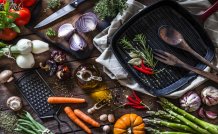 30 hours
3.0 CEUs
Cooking Class Bundle: 5 Cooking Courses
$120.00
30 hours
3.0 CEUs
Cooking Class Bundle: 5 Cooking Courses
$120.00
-
 5 hours
0.5 CEUs
All About Herbs
$95.00
5 hours
0.5 CEUs
All About Herbs
$95.00
-
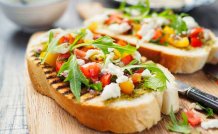 3 hours
0.3 CEUs
Italian Cooking 101
$95.00
3 hours
0.3 CEUs
Italian Cooking 101
$95.00
-
 3 hours
0.3 CEUs
Bartending and Mixology 101
$95.00
3 hours
0.3 CEUs
Bartending and Mixology 101
$95.00
-
 7 hours
0.7 CEUs
Waiter and Waitress Training 101
$95.00
7 hours
0.7 CEUs
Waiter and Waitress Training 101
$95.00
-
 14 hours
1.4 CEUs
Cake Decorating 101
$95.00
14 hours
1.4 CEUs
Cake Decorating 101
$95.00
-
 7 hours
0.7 CEUs
Nutrition 101
$95.00
7 hours
0.7 CEUs
Nutrition 101
$95.00
-
 5 hours
0.5 CEUs
Bread Baking 101
$95.00
5 hours
0.5 CEUs
Bread Baking 101
$95.00
-
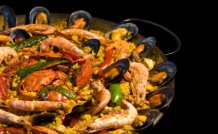 3 hours
0.3 CEUs
Spanish Cooking 101
$95.00
3 hours
0.3 CEUs
Spanish Cooking 101
$95.00
-
 14 hours
1.4 CEUs
Weight Training 101
$95.00
14 hours
1.4 CEUs
Weight Training 101
$95.00
-
 4 hours
0.4 CEUs
How to Bake Cookies
$95.00
4 hours
0.4 CEUs
How to Bake Cookies
$95.00
-
 7 hours
0.7 CEUs
Spanish Culture 101
$95.00
7 hours
0.7 CEUs
Spanish Culture 101
$95.00


